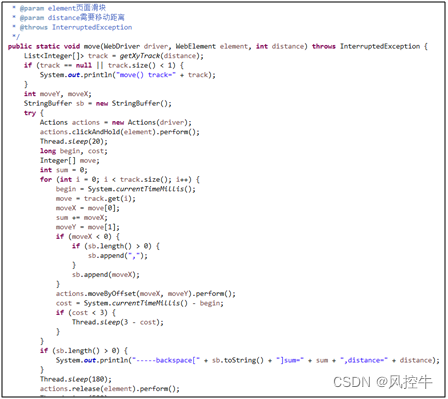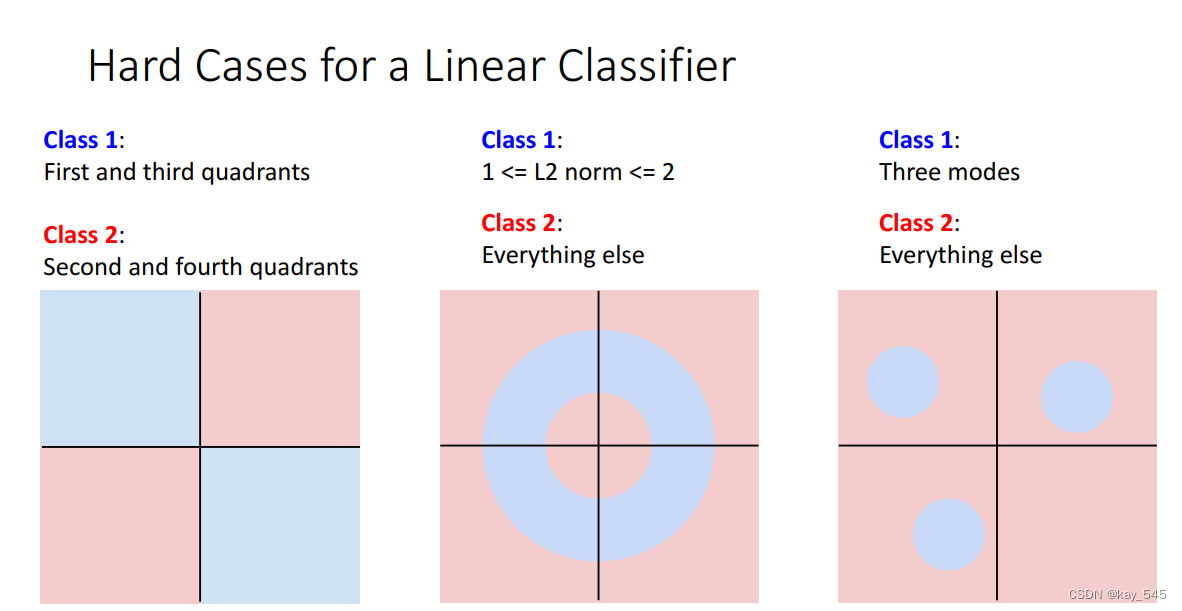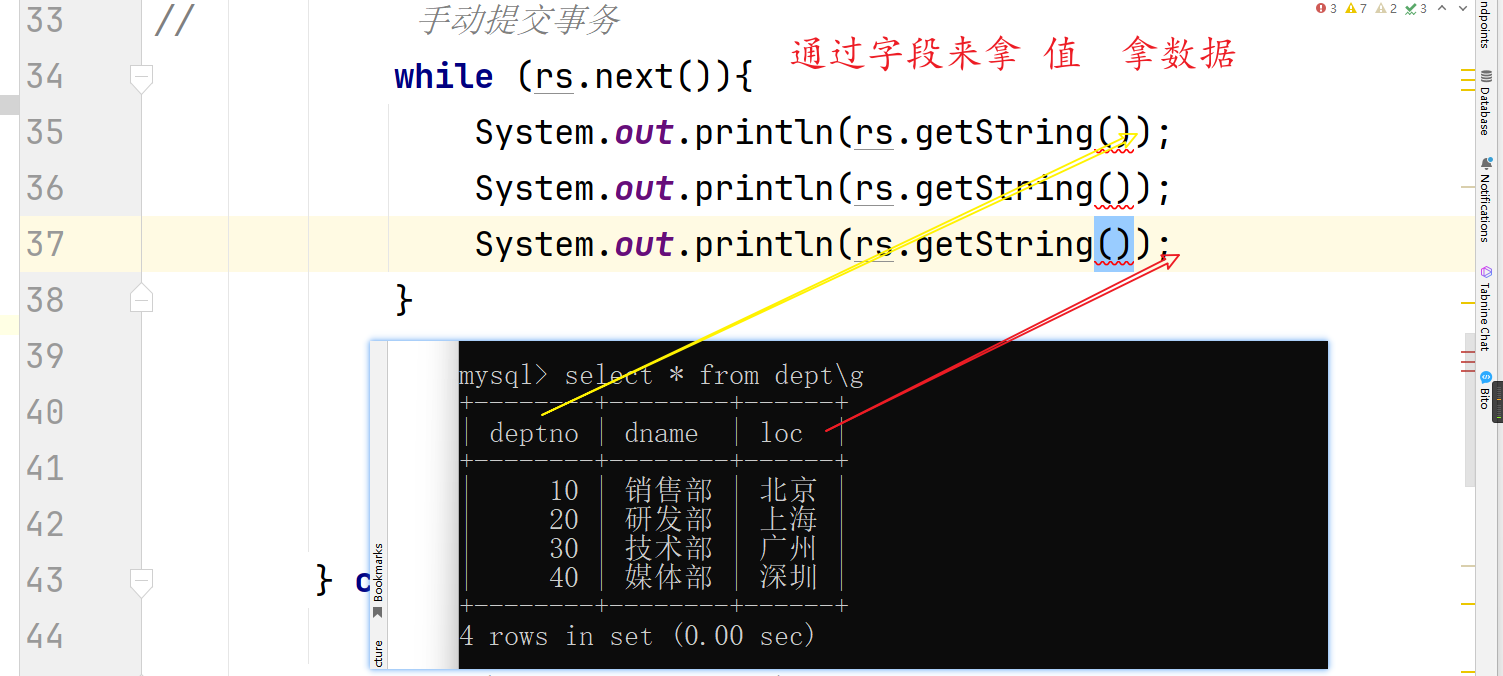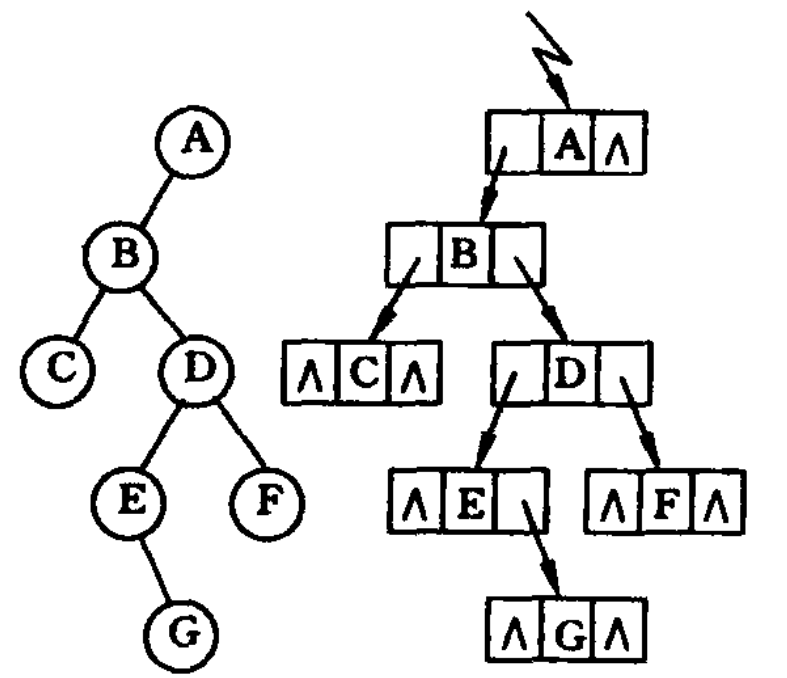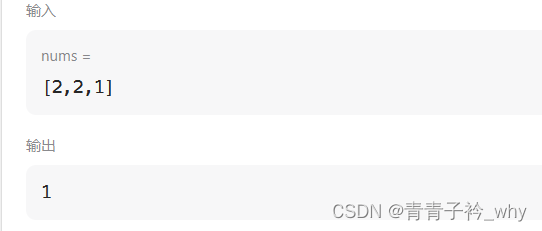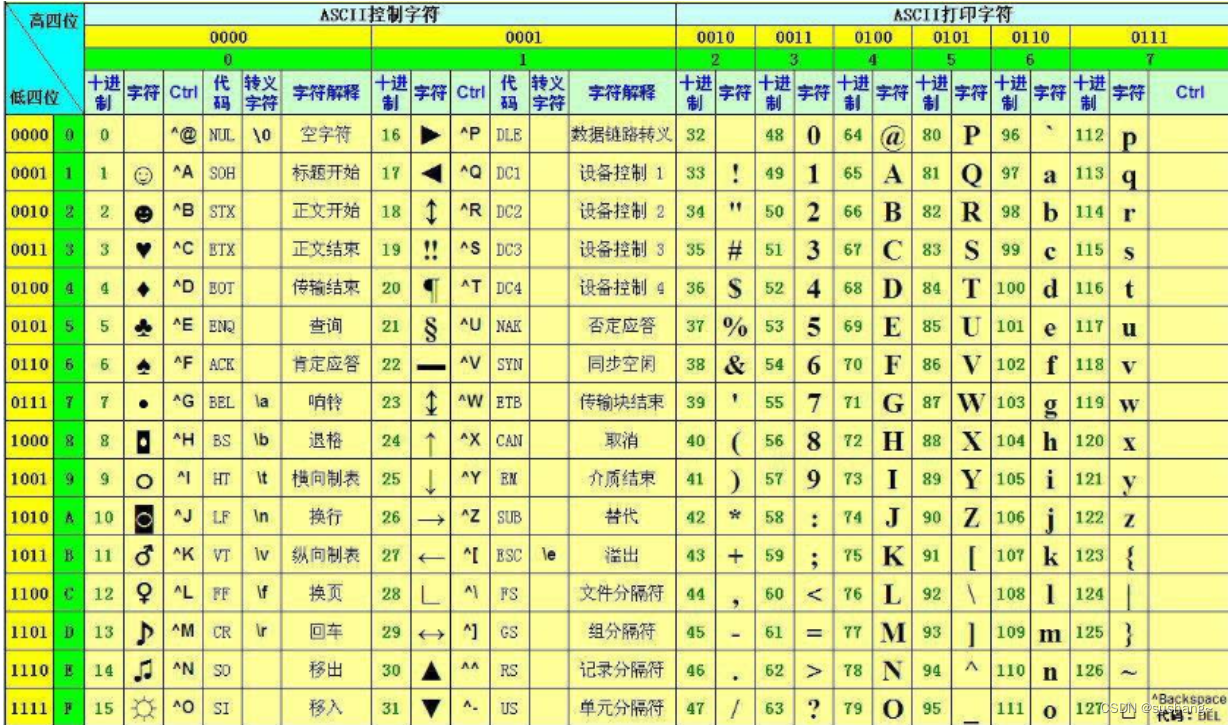
🔥个人主页: Forcible Bug Maker
🔥专栏: STL || C++
目录
- 前言
- 🔥容量接口(Capacity)
- ==size和length==
- ==capacity==
- ==max_size==
- ==reserve==
- ==resize==
- ==clear==
- ==empty==
- ==shrink_to_fit==
- 🔥元素获取(Element access)
- ==operator[ ]==
- ==at==
- ==back和front==
- 结语
前言
本篇博客主要内容:STL库中string的容量接口(Capacity)和四种元素获取方式(Element access)的介绍和使用。
来到string类的使用第二篇,让我们接着上一篇来讲。
🔥容量接口(Capacity)

size和length


size_t size() const;
size_t length() const;
将这两个函数接口的功能完全相同,它们没有参数传递,只有一个返回值(且这个返回值是const类型,不能被改变),返回:string对象中串的长度。
使用样例:
#include <iostream>
#include <string>
using namespace std;
int main()
{
string str("Test string");
// string::size
cout << "字符串长度为" << str.size() << endl;
// string::length
cout << "字符串长度为" << str.length() << endl;
return 0;
}

至于为什么设计了两个功能相同的函数,这就牵扯到STL的发展史了。string是STL库中最早被实现的内容之一,当时获取字符串长度的时候只有length,并没有size。但随着STL的发展,陆续出现了vector,list,stack,queue这样的容器,在获取他们的元素个数时,使用的接口函数名用length(长度)似乎不太合适,于是选用了size(大小),string为了和别的容器保持一致,不得已也给自己加了一个size上去。
capacity

size_t capacity() const;
返回值:当前string对象中给串分配的字节数。
这个分配的容量不一定和string的长度(length)相等,它可以等于或大于length的大小,它额外的空间可以优化对象往串中增加字符时的操作。如果string的容量(capacity)和串的长度(length)相等的话,那么当你向string对象的串中增加字符时,会导致每次的增加操作都会重新让存储串的空间扩一次容。
#include <iostream>
#include <string>
using namespace std;
int main()
{
string str("Test string");
cout << "size: " << str.size() << "\n";
cout << "length: " << str.length() << "\n";
cout << "capacity: " << str.capacity() << "\n";
return 0;
}

如果看过我之前数据结构部分的内容,其实就不难理解capacity和length之间的区别。
可以看看我之前数据结构的这篇:初阶数据结构—顺序表和链表(C语言),里面capacity和size的道理和这里相同。
max_size

size_t max_size() const;
返回值:string可以开辟的最大长度。
使用案例:
// comparing size, length, capacity and max_size
#include <iostream>
#include <string>
using namespace std;
int main()
{
string str("Test string");
cout << "size: " << str.size() << "\n";
cout << "length: " << str.length() << "\n";
cout << "capacity: " << str.capacity() << "\n";
cout << "max_size: " << str.max_size() << "\n";
return 0;
}

你可能会感叹,string竟然可以开这么大。可max_size的大小简单计算一下,已经有两个G了。计算机其实开不了这么大,其中涉及到很多别的因素。而且在coding中基本上也想不到用这个,所以此函数实际没什么作用。
reserve

void reserve (size_t n = 0);
这是改变string对象capacity大小的一个命令,能将capacity的大小改变使其大于等于n。
如果n比当前对象的capacity大,则这个函数会将string对象扩容至大于等于n。
当n小于capacity时,这个行为是为被C++标准定义的,具体行为取决于编译器:
- 一种编译器(如VS),会选择无视这条命令,cpacity保持原来的大小。
- 另一种编译器(Linux下的g++),比较听话,会将string对象缩容使capacity等于n。
这个接口函数不会改变string串中的内容和length的大小。
无返回值。
使用样例:
#include <iostream>
#include <fstream>
#include <string>
using namespace std;
int main()
{
string str("hello world");
cout << str.length() << endl;
cout << str.capacity() << endl;
cout << endl;
str.reserve(100);
cout << str.length() << endl;
cout << str.capacity() << endl;
return 0;
}

resize

void resize (size_t n);
void resize (size_t n, char c);
将string对象的length改变为n。
如果n小于当前string对象的length,那么string对象的串将被缩短,超出n部分的内容会被移除。
如果n大于当前string对象的length,如果没有提供第二个参数c,阔出来的新内容将会被'\0'填充;否则会被第二个参数“字符c”填充。
当n大于capacity的时候,string对象也会被扩容,使capacity增加至大于等于n。
无返回值。
使用样例:
// resizing string
#include <iostream>
#include <string>
using namespace std;
int main()
{
string str("hello world");
cout << str << endl;
size_t sz = str.length();
str.resize(sz + 4, 'x');
cout << str << endl;
// '\0'表示空,不会被打印
str.resize(sz + 5);
cout << str << endl;
str.resize(sz);
cout << str << endl;
return 0;
}

clear

void clear();
将string串中的内容都删除,使其变成空串(length变成0),但容量capacity不会改变。
使用样例:
#include <iostream>
#include <string>
using namespace std;
int main()
{
string str("hello world");
cout << str << endl;
cout << "str.size():" << str.size() << endl;
cout << "str.capacity():" << str.capacity() << endl;
str.clear();
cout << str << endl;
cout << "str.size():" << str.size() << endl;
cout << "str.capacity():" << str.capacity() << endl;
return 0;
}
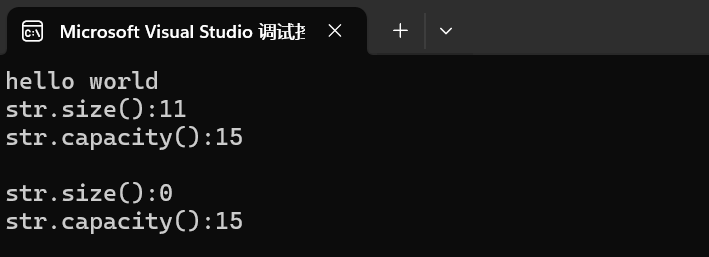
empty

bool empty() const
返回值:string串的长度(length)是否为0,如果为零,返回真(true,1),如果不为零,返回假(false,0)。
使用样例:
#include <iostream>
#include <string>
using namespace std;
int main()
{
string str1("hello world");
string str2;
cout << "str1.length():" << str1.length() << endl;
cout << "str2.length():" << str2.length() << endl;
cout << endl;
cout << "str1.empty():" << str1.empty() << endl;
cout << "str2.empty():" << str2.empty() << endl;
return 0;
}
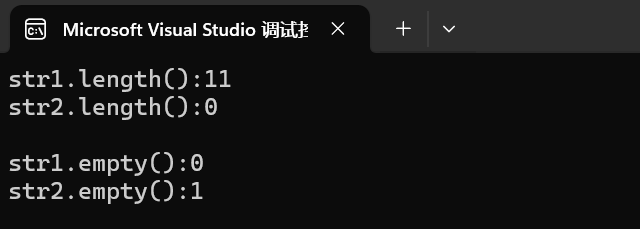
shrink_to_fit

void shrink_to_fit();
C++11新增接口。
此接口函数的作用是缩容,但是其具体怎么实现,其实也是C++未定义的。其作用和reserve,n小于capacity时的情况差不多,不同编译器会有不同的解释和实现。
注:缩容对编译器来说开销一般都不小,所以非必要情况少使用缩容。
🔥元素获取(Element access)

operator[ ]

char& operator[] (size_t pos);
const char& operator[] (size_t pos) const;
学过类和对象操作符重载的都知道,这里是一个[ ]的操作符重载,可以通过 方括号[ ]+下标 来获取串中的元素的引用。
注:同时重载了const版本的方括号[ ]访问,当string对象为const类型时,下标获取的元素只能读,不能改。
代码样例和at放一起了。
at

char& at (size_t pos);
const char& at (size_t pos) const;
at的功能和operator[ ]相同,都是通过下标访问串中的元素。当string对象为非const类型时,也可以使用此访问对串进行内容上的改动。
使用样例:
#include <iostream>
#include <string>
using namespace std;
int main()
{
// operator[]
string str("Test string");
str[1] = 'T';
for (int i = 0; i < str.length(); ++i)
{
cout << str[i] << " ";
}
cout << endl;
// at
str.at(2) = 'T';
for (int i = 0; i < str.length(); ++i)
{
cout << str.at(i) << " ";
}
cout << endl;
return 0;
}

注:at和operator[ ]也有区别,当下标pos越界时,使用at访问程序会抛异常,能被try…catch捕获;而用operator[ ]访问则会直接报错。
back和front
C++11新增语法。

char& back();
const char& back() const;
返回string对象串的末尾元素的引用。
非const类型的string对象可以通过此函数更改串尾元素内容。

char& front();
const char& front() const;
返回string对象串的首元素的引用。
非const类型的string对象可以通过此函数更改串首元素内容。
使用样例:
#include <iostream>
#include <string>
using namespace std;
int main()
{
string str("test string");
str.front() = 'T';
str.back() = 'G';
cout << str << endl;
return 0;
}

结语
本篇博客,介绍了9个容量接口(Capacity),它们有查询string串长度和更改长度的(size,length,resize),也有查询容量和更改容量的(capacity,reserve),和清理的(clear)。同时也讲到了种访问string对象串中元素的四种方式(operator[ ],at,front和back)。以上所提到各种接口和方法能让我们更加方便的操控string对象中的容量和内容,在熟练它们之后,就可以尽量避免使用那烦人的静态字符数组了。
博主会继续分享关于string类的使用以及STL更多的内容,感谢大家的支持。♥

